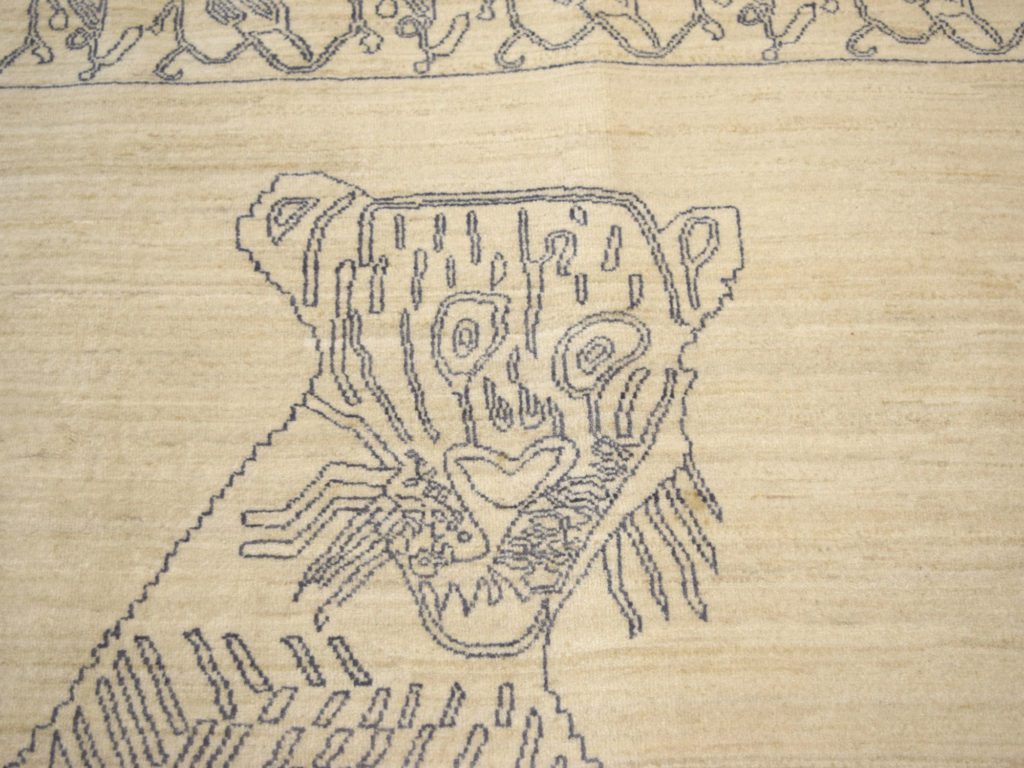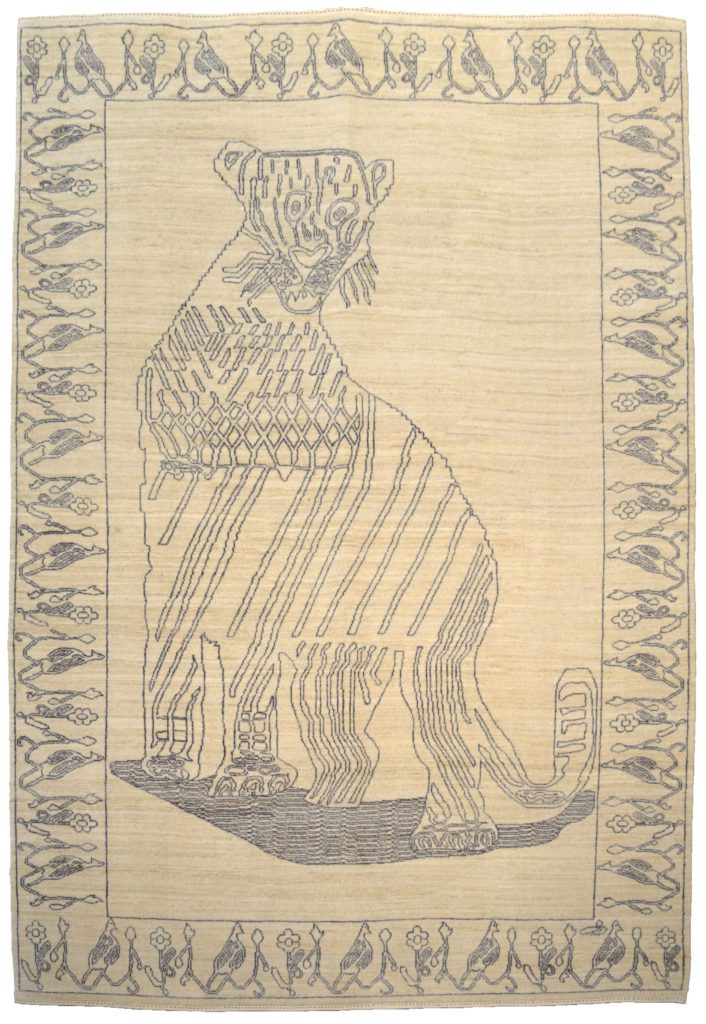Staff Pick – Leopardess
The true creativity of Persian artisans and master weavers is the driving force behind many of our collections here at Orley Shabahang. Ancient Persian designs, in particular, have long inspired our work, as is the case with the Orley Shabahang Animal Collection. When reimagining this genre, the goal is to capture the essence and history of these carpets with a contemporary touch. And to bring these motifs and centuries-old stories and present them into the modern spaces of today. In this week’s Staff Pick, we examine “Leopardess”—its construction, the origins of its design, and its symbolism.
To create this one-of-a-kind piece, master weavers implemented the exclusive Orley Shabahang Cheshmeh weave. The Cheshmeh weave, developed from traditional Persian weaving techniques, requires the pile to be hand-knotted onto the warp and weft foundation. This weaving process begins with the preparation of wool, specifically wool from Persian fat-tailed sheep. Such wool possesses an exceptionally high lanolin content, which serves as natural protection again stains and a natural conditioner over time. Once shorn, weavers must hand-spin the wool, combining the wool fibers into long threads of yarn. Hand-spinning the wool is critical because it increases the overall strength of the yarn while also reincorporating the natural lanolin of the fibers back into the wool. After the spinning is complete, dye masters utilize traditional, organic dye recipes to alter the wool’s color. Praised for bright and fade-resistant hues, weavers prefer organic dyes over the synthetic dyes used in mass-produced carpets. Once dyed, weavers rinse the excess dyes from the yarn through natural river water and dry the wool under the sun to set the patina. This intricate process is one of the many ways for Orley Shabahang to continue to commit to crafting carpets that stand the test of time. That is, carpets that are both stunning and functional, created to become the antiques of tomorrow.

In creating Leopardess, the influence of vintage and antique Qashqai carpets comes directly into play. Usually found within Qashqui textiles, Big-cat motifs and their symbology primarily featured as solo motifs. In Leopardess, a large squatting leopard sits upon a cream-white background, surrounded by a simplistic and repetitive border. The design utilizes centuries-old linear folk elements to build the face, torso, and legs. Through negative space and minimal detailing in neutral tones, the overall design reads contemporary and relaxed. At the same time, incredible attention to detail is required to create the Leopardess’s shadow, paws, and whiskers. Furthermore, moving outwards across the field, the leopardess is surrounded by interconnecting bird, flower, and branch motifs that act as the border. Due to the all-natural cream wool background, these light gray linear details create fabulous contrast throughout the design.

Symbolically, lions and leopards have different connotations depending on the scene set for the carpet. When shown dueling against a human figure, big cats typically signify antiheroes, representing the human ego and darkness, and thus the fight between good and evil within ourselves. When shown independently, however, they are associated with strength, courage, power, and grace. In this example, the standalone leopardess represents leadership.

Between our two conveniently located Milwaukee showrooms, we have thousands of carpets in stock in every size and price point. If you’re interested in Leopardess or other pieces from our Animal collection, please visit one of our Milwaukee locations or the brand-new Collections pages on orleyshabahang.com. For our digital storefront, visit us on 1stdibs.com/orleyshabahang for Animal Carpets and more!

